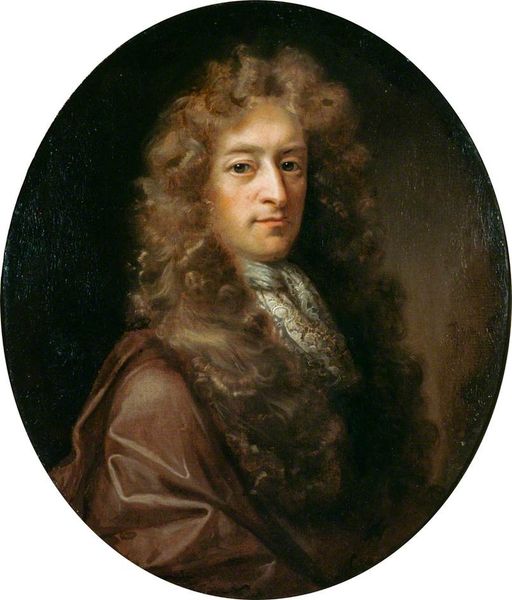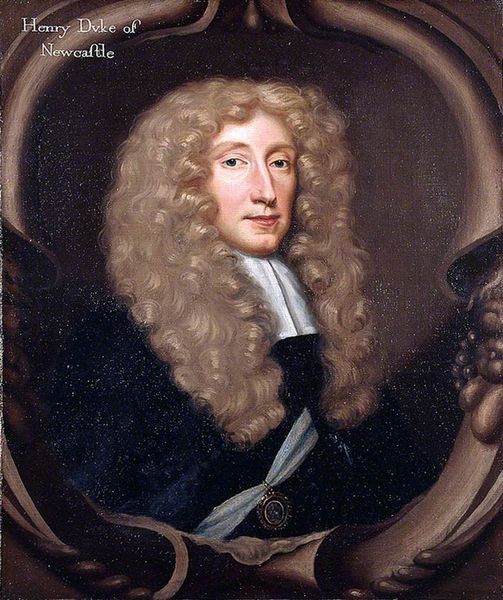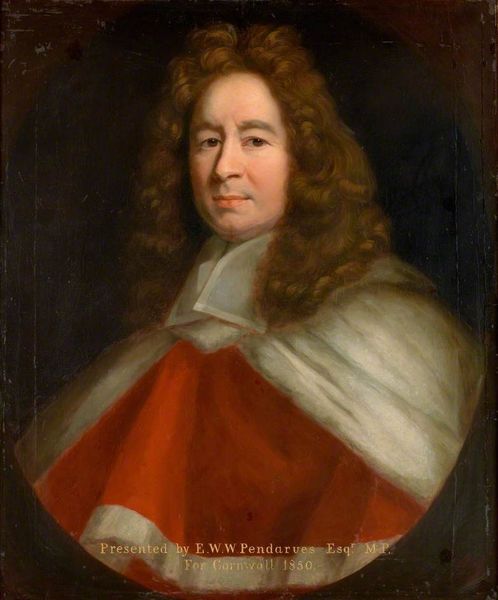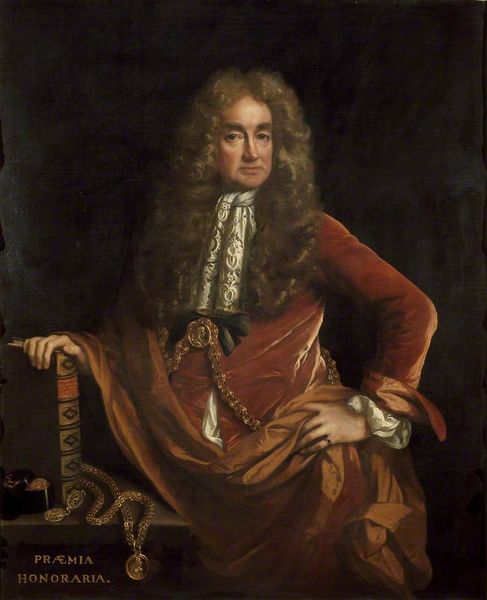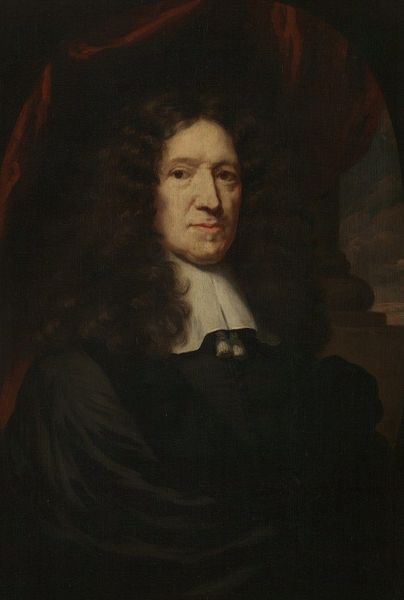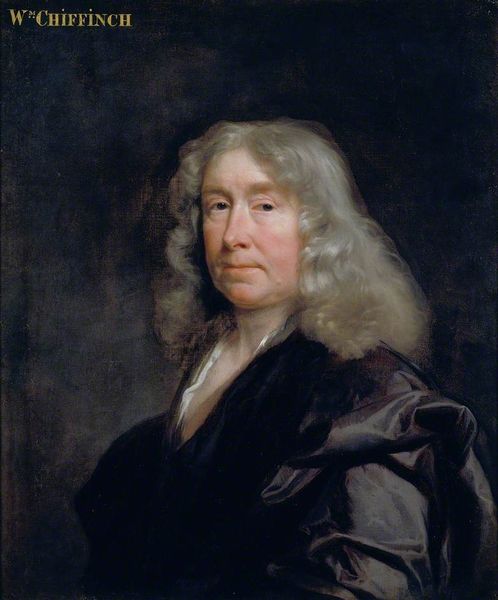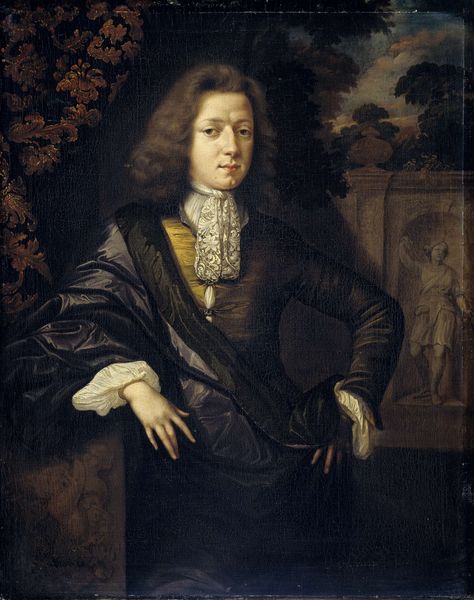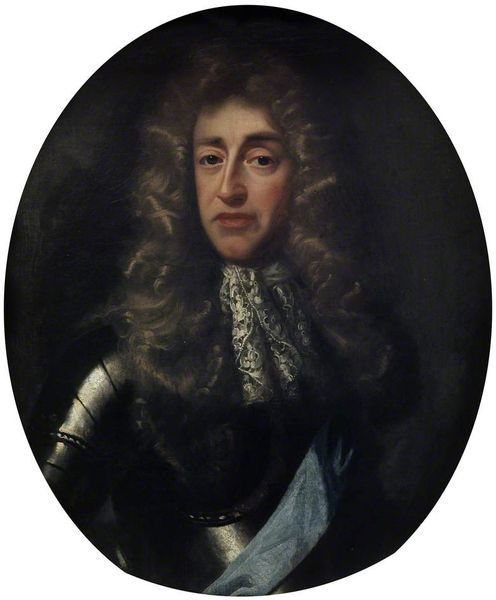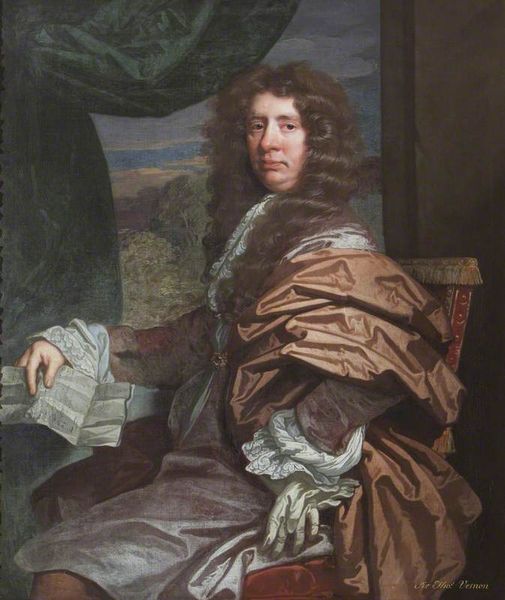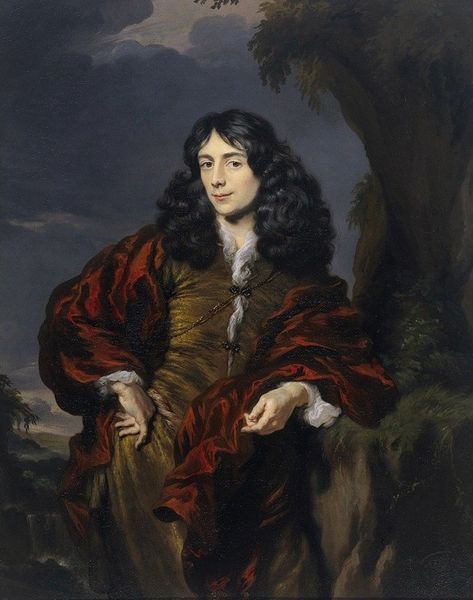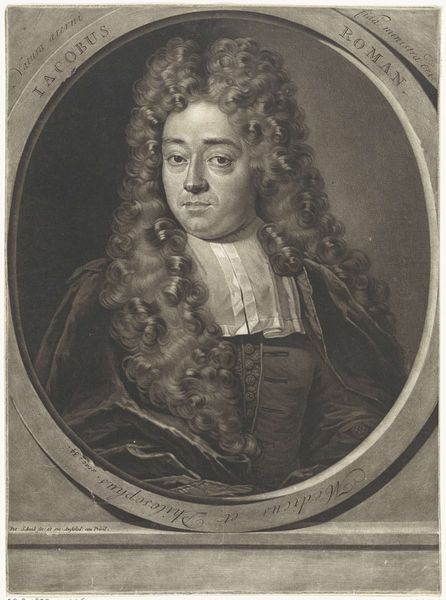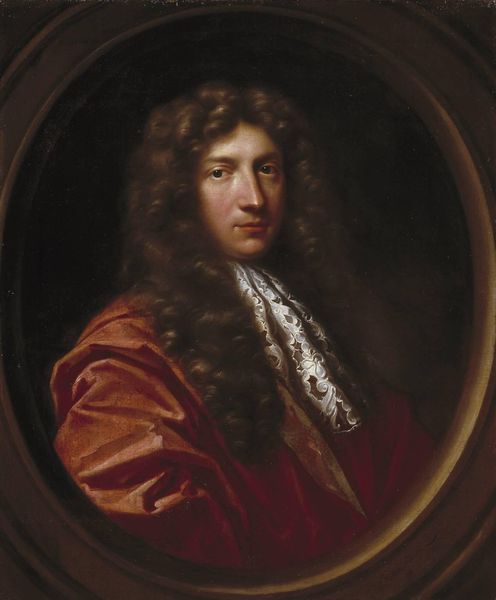
painting, oil-paint
#
portrait
#
baroque
#
portrait
#
painting
#
oil-paint
#
figuration
Copyright: Public domain
Curator: Let's take a look at this portrait of John Somers, painted around 1680 by John Riley. Oil on canvas, and very much a product of its time. What are your first thoughts? Editor: It's the hair that strikes me. Such cascading curls! And the lace, of course, a signifier of wealth and status. There's something almost theatrical about it. A controlled flamboyance, perhaps? Curator: Absolutely. Riley was working within the conventions of Baroque portraiture. Think about the court of Charles II: Restoration England was keen to project an image of power and sophistication after years of Puritan rule. Editor: And this portrait, then, becomes a piece of propaganda, not just a likeness. How much can we trust what we're seeing? Were artists always conscious of creating that kind of narrative? Curator: Conscious, yes, but perhaps "propaganda" is too strong a word. Portraiture served a crucial function in consolidating social hierarchies and communicating lineage. These images helped shape how people viewed the world and their place within it. Somers, after all, was a prominent lawyer and statesman; he later became Lord Chancellor. Riley’s composition speaks directly to Somers’ ambition and intellect. Editor: So, the flowing wig, the elegant lace—they aren't just decorative elements, but tools of social engineering? Curator: Precisely! Though I wouldn't discount the decorative aspects altogether. It’s also a visual pleasure. Think about the skill required to capture the light on the folds of that lace. The soft brushstrokes of the hair against the dark backdrop. These paintings were luxury objects, after all, intended to impress and awe. Editor: The artist is celebrating not just the sitter's social position, but the sitter himself— his intellect, his importance, the things that differentiate him from other people in his circle. But the man is also obscured by so many props, literally embedded within these markers of wealth and taste. Is it an embrace or an erasure of identity? Curator: Perhaps both! This is the inherent paradox of formal portraiture. A fascinating dance between individuality and the rigid conventions of the time. The painting exists within and contributes to a whole network of political relationships in order to convey status. Editor: And it raises questions about visibility. Who gets seen, and how? I keep circling back to those power structures; they resonate so strongly, even now. Curator: And isn't that the power of these historical portraits? They hold up a mirror, not just to the past, but to our present. They allow us to reexamine and renegotiate assumptions we continue to carry with us. Editor: A conversation across centuries, conducted in oils.
Comments
No comments
Be the first to comment and join the conversation on the ultimate creative platform.
